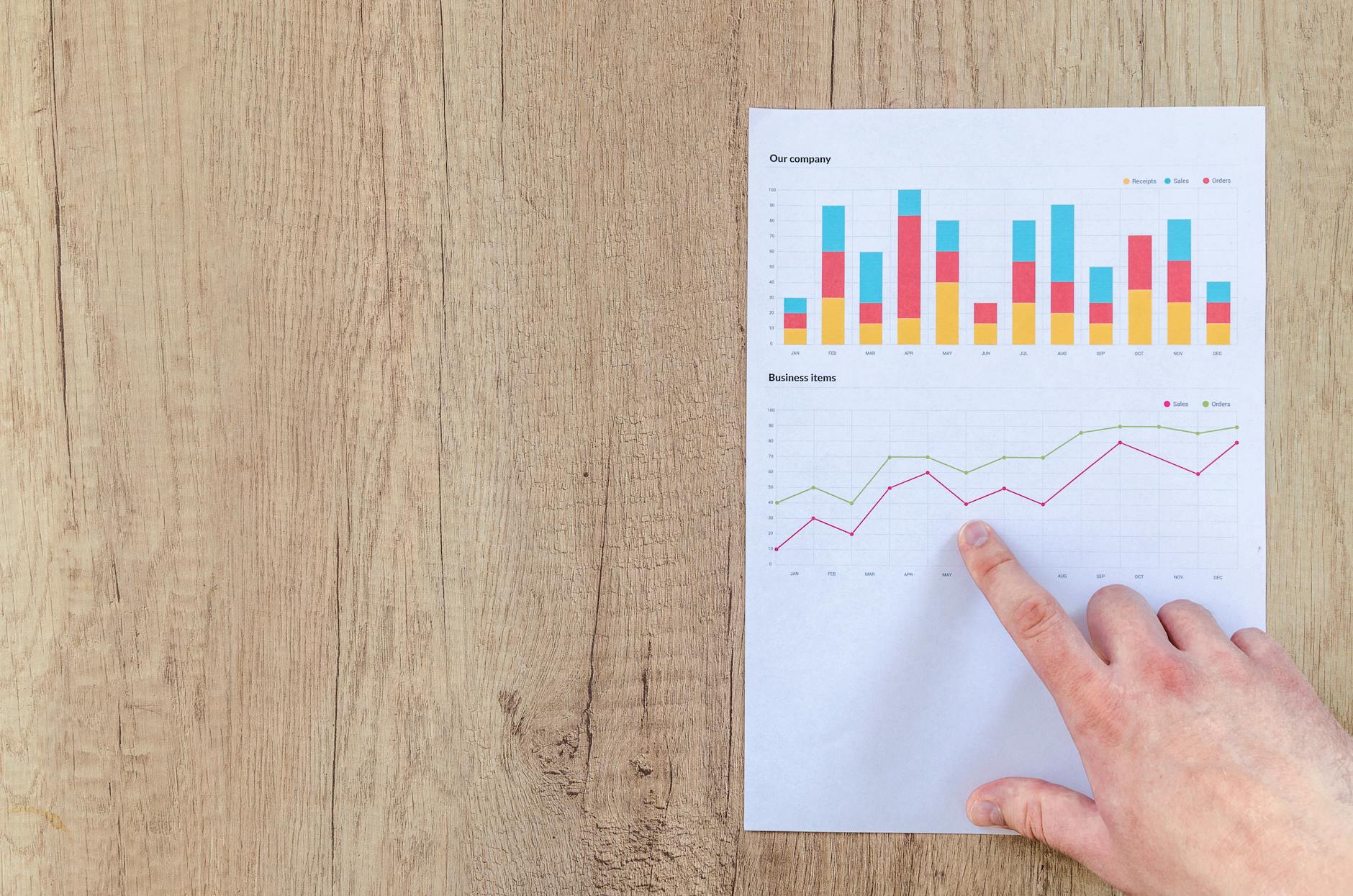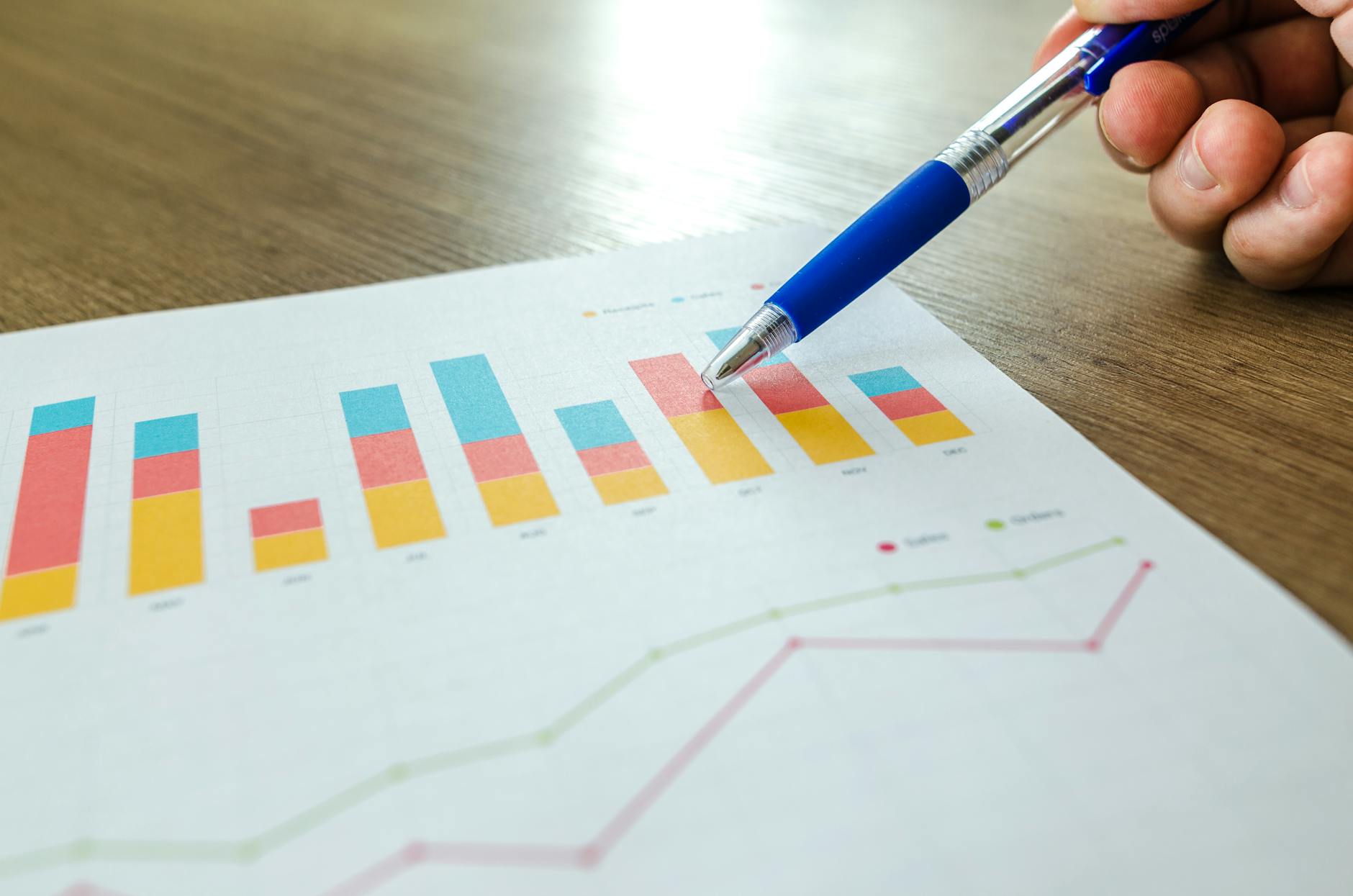Economic forecasts can seem like a tantalizing glimpse into the future, yet they’re notoriously fallible. Trying to base your financial decisions solely on these forecasts is like predicting the wind’s direction during a storm. Factors affecting economies change with breathtaking speed. Yet, everyday financial choices still need a foundation. This is where key performance metrics offer enduring value, whether you’re managing your budget or planning larger investments. By focusing on these reliable indicators, you can steer through economic uncertainties with confidence.
Consider metrics like inflation rates, employment figures, and consumer confidence, as they provide real-time snapshots of economic health. They help cut through the noise, offering clarity over speculation. For those hungry for actionable financial insights, pivot to essential metrics that anchor your financial roadmap.
Understanding Economic Forecasts
Economic forecasts are akin to weather predictions—they’re insightful but not always correct. They aim to predict financial trends but can leave many scratching their heads when economic fluctuations deviate from expectations. Before fully banking on these predictions, it’s essential to understand how forecasts are crafted and what you can rely on more consistently.
The Role of Economic Indicators

Economic indicators are like the gauges on a dashboard, guiding economists by measuring crucial aspects of an economy’s performance. These indicators include:
- Gross Domestic Product (GDP): Reflects the economic output and overall health of a country.
- Employment Figures: These numbers illustrate job market strength, influencing everything from policy decisions to consumer confidence.
- Inflation Rates: Understanding inflation is vital for recognizing purchasing power and interest rate trends.
- Consumer Confidence: Indicates how optimistic consumers are about the economy’s current situation, impacting their spending and saving behaviors.
Each of these indicators, although not predictive on their own, helps create a nuanced picture of the economic condition. For a more in-depth exploration, this Investopedia article on Economic Forecasting provides excellent insights.
Common Types of Economic Forecasts
There are several types of forecasts economists rely upon, grouped primarily into short-term and long-term categories. Short-term forecasts apply to immediate future conditions, typically anywhere from a few months to a year. These are often used for monetary policy adjustments and swift financial planning.
Long-term forecasts, on the other hand, attempt to identify economic trends over several years. They are crucial for planning extensive economic strategies like national debt reduction programs and investment in infrastructure. Long-term forecasting is more challenging due to the increased likelihood of unforeseen circumstances affecting predictions.
If you’re keen on delving deeper, consider browsing MIT Press details on how these forecasts are comprehensively understood at Understanding Economic Forecasts by MIT Press.
Staying informed about the Federal Reserve updates and making savvy investment and savings decisions can be greatly influenced by understanding these metrics. Stay tuned for more sections where tangible decision-making based on these insights is addressed. Don’t miss the chance to subscribe and continue exploring these engaging financial narratives with us on our website.
Reasons for Unreliability in Economic Forecasting
Economic forecasts try to decipher future trends, but much like predicting the weather, they often mislead. Let’s uncover why these predictions can be unreliable, spotlighting areas you should consider instead.
Complexity of Economies

Economic systems resemble a complex web, where every strand has a role to play. Think of it as a vast ocean—mysterious currents, soaring waves, and unseen depths. This intricacy itself injects a significant degree of uncertainty into forecasts. Economists juggle countless moving parts like consumer behavior, potential shocks, and policy changes. Simply put, the sheer volume of variables doesn’t allow for streamlined projections.
Changing Variables and Assumptions
Imagine building a house on shifting sands. That’s somewhat akin to how economists handle their projections. Forecasting models rest on countless assumptions and initial conditions. When real-world conditions change due to technological advancements, policy shifts, or innovation—we’re left wondering whether the models tethered to these once-solid sands still stand. These shifts can create discrepancies in predictions, sometimes leading forecasters into uncharted territory.
For more on potential complications in economic predictions, this article provides relevant insights.
Historical Data Limitations
Economists often turn to historical data while projecting future trends. While history is a valuable teacher, it also glosses over fundamental shifts in society, technology, and culture. Patterns found in yesteryears may have minimal relevance today. Consider trying to map ancient roads onto today’s cityscape. Those faint traces don’t account for developments like unexpected urban expansions, entirely new technologies, or dramatic cultural shifts.
Find details on how reliance on historical data impacts forecasting in the following document.
Global Events and Their Impact
Global events can be wildly unpredictable—real-life stormy weather of economic plans. An unexpected geopolitical tension, health crisis, or natural disaster can send shockwaves worldwide, making once-confident predictions feel obsolete. Economists can’t necessarily foresee these chain-reactive events, leaving a space for potential unpredictability.
For better understanding how current worldwide events can demystify expected patterns, explore your next intriguing read here.
While you’ve now peeked into forecasting’s querulous complexities, don’t dismiss proactive steps toward financial stability. For guidance on thriving amidst unpredictable forecasts, explore our articles on money management. Engage today and subscribe for more insights into economic strategies.
Key Metrics to Track Instead of Economic Forecasts
Navigating the turbulent seas of the economy can be daunting, especially when traditional forecasts miss the mark. It’s crucial to have alternative lighthouses on this uncertain journey—key economic metrics offering clearer insights. These gauges provide real-time feedback about economic conditions and are pivotal for strategic financial planning. Let’s uncover some core metrics you should focus on to sidestep the pitfalls of unreliable forecasts. Let’s get into which metrics can light your way.
Consumer Confidence Index

When you’re looking for an alternative to traditional forecasts, the Consumer Confidence Index (CCI) holds great significance. CCI measures the aggregate confidence, influencing shoppers’ willingness to spend which is a driving force for economic growth. Tracking this index paints a picture of the potential elasticity or contraction within the next waves of consumer expenditure. Curious about how consumer confidence can transform industries? Dive into Why Consumer Confidence Is Important for (Your) Business.
Leading Economic Indicators
Providing a glimpse into the economic horizon, leading economic indicators help anticipate future trends rather than merely reflecting past conditions. Essential indicators include:
- Stock Market Is a Key Indicator: It can reveal societal confidence levels.
- Housing Permits: These can predict construction spending, a prime factor affecting GDP.
- New Business Launches: These reflect the robust health of entrepreneurship and innovation.
Discover the Top 10 U.S. Economic Indicators Here.
Debt Levels and Their Trends
In today’s financial landscape, understanding debt levels and unfolds prove critical. Excessive debt often looms like a shadow over financial systems, distorting the overall economic balance. By examining debt movements, you gain insights into long-term sustainability. Dive deeper in How Does Excessive Debt Hurt an Economy?
Readers with substantial debt might consider the importance and benefits of debt consolidation outlined in our articles. You can also view our insights on student loans for better debt handling strategies.
Employment Rates and Wage Growth
Employment data unveils the resilience of a nation’s economy. Do wages keep pace with inflation? Are jobs being generated as expected? Monitoring these parameters provides a real-time glimpse into economic vitality. Learn how wage dynamics shape economic viewpoints in articles like Unemployment and Wage Inflation: State-Level Findings.
Explore our views on economic strategies tailored for contemporary climate changes in payrolls and wages.
Inflation Rates
Inflation rates subtly mold purchasing power and economy burnout speed. Rising inflation? Pay attention, as it affects savings, interest rates, and daily expenses. Cracking the inflation code means striking the perfect balance for sustained economic growth. Find out more through Predicting Inflation: What have we learned?
For a richer exploration of field charts around inflation trends, investigate our compiled articles and insights on financial management.
Using these metrics rather than forecasts offers a more anchored perspective on economic directions. Excited to dig deeper into how these indicators transform your decisions? Make sure to subscribe on our site for ongoing financial clarity they’re waiting just for you.
The Role of Financial Education in Understanding Economic Metrics
In a world where events unfold at an astonishing pace, understanding economic metrics can feel as daunting as deciphering an ancient manuscript without context. Financial education empowers individuals to interpret these numbers and trends, allowing for more informed decisions that steer one’s financial ship through choppy economic waters. Moreover, there are practical avenues where this knowledge aligns directly with personal finance journeys.
Resources for Financial Education
To decipher economic metrics swiftly and accurately, critically acclaimed resources can serve as excellent starting points. A deep dive into personalized resources helps in grasping how key metrics shape your financial future.
- The Consumer Financial Protection Bureau offers adult financial education tools tailored to various life stages and monetary goals, focusing on everything from auto loans to money management.
- For more structured exploration, the Financial Literacy Resource Directory compiles comprehensive educational aids designed for all ages.
- The FDIC’s Educator Resources provide educators with structured material to help incorporate practical financial management strategies into academic environments.
Never underestimate the power of continual learning; these valuable resources cater to everyone from the beginner enthusiast to seasoned professionals in finance fields.
How to Apply Knowledge of Economic Metrics
Applying knowledge of economic metrics in personal finance resembles the careful navigation of a vast, maples ocean using a compass. Informed decisions based on concrete data lead to smarter spending, prudent saving, and strategic investing.
- Budgeting: Economic indicators like inflation actively impact your monthly budget. Understanding these can help adjust your budget smartly to shield your finances from unexpected economic shifts.
- Savings Plans: Having a grip on interest rates aids in choosing the best savings accounts available here.
- Investments: Recognizing metrics such as GDP growth can guide your investments in stocks or bonds that align well with economic performance outlooks.
Comprehensively utilizing economic indicators ensures financial strategies stay rooted in reality rather than hopeful projections.
Armed with this knowledge, the roads to economic empowerment stretch invitingly before you. Embrace this learning journey and subscribe for deeper insights about money management right on our site—a treasure trove of strategies to enhance your financial literacy awaits!
Measuring Economic Forecast Accuracy
As we reflect on economic forecasts and their inherent limitations, it’s vital to consider alternative ways of measuring economic accuracy. Moving away from dependence on broad forecasts implies embracing direct data that open new pathways to understanding.
Real-Time Data Analysis
Real-time data functions as a trusted ally amidst forecast uncertainties. Much like a live report card, it allows us to witness economic activity in motion. Why wait for conclusions from broadly sweeping predictions? Instead, embrace the insights provided by daily indicators which offer the immediacy needed for swift decision-making. This approach empowers you to ground your decisions on facts that matter most in the moment acts like looking directly into last night’s telescope view of the stars instead of relying solely on past astronomical charts.
Strategically incorporating adept financial tools harnesses real-time data streams to feed intelligence across economic landscapes. To navigate this field, becoming privy to digital ‘snapshots’ rather than expanding tapestries is the modern cornerstone of economics.
Adaptive Models
Imagine turning to a map built for navigation amid sea tide shifts. Similarly, adaptive models aren’t etched in stone but respond and contour themselves just as naturally. Thanks to technology, we lean on models that self-adjust and revise to coincide with live data entry. Consider cloudary models and Interactive Software—abilities redefining and fitting forecasts to worthy realities akin to stitching new seams onto traditional fabric when styles change.
Adaptive metrics skillfully embrace data evolution rather than operating within static paradigms. Evaluations measured through such programs enhance directions, revisioning old ideas with unprecedented flair.
Cultivating Economic Flexibility
Facing dynamic trends demands a constant vigilance for novel compass beams. Staying receptive to untapped rhythms leads to clarity amidst change. Even simpler, it’s akin to transmuting frequencies on a well-loved radio station. Banking thrives precisely because a nuanced knowledge sensitizes ears to transitional tones. Generating profitability lays foundation blocks directly over behavioral shifts. Are industries and spending adapting? Check your cognitive tune-up before these threads optimistically shape fiscal music layered beneath upcoming innovations.
The key to thriving rests in valuing financial literacy—marrying awareness with action. Orchestrating efficient forecasts, readies cue adaptation formations through embracing technologies previously externalized but ready in times ahead.
Dive into further realms awaiting exploration to embrace information-led confidence in decision-making. Continue educating yourself through our diverse range of finance and investment resources.

